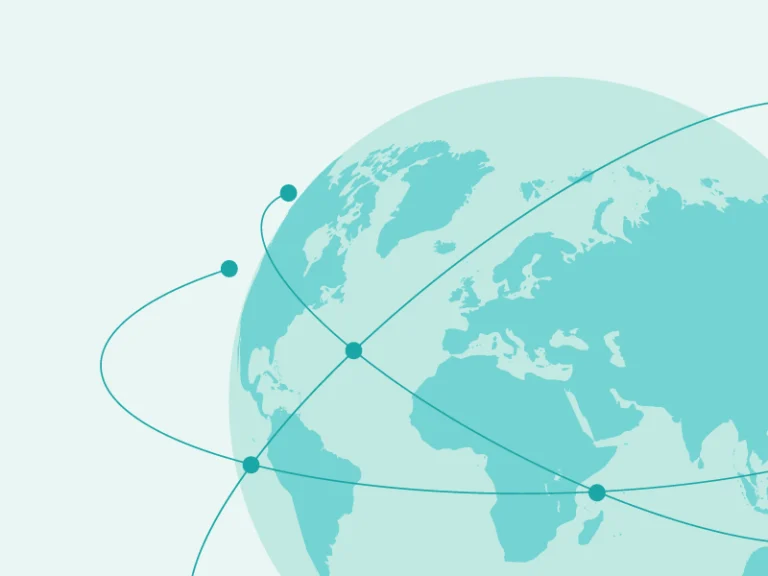Creating the best DTC ecommerce shopper experience is not easy. And it’s even more difficult to do over and over again in different markets around the world. International shoppers have different expectations than your domestic shoppers.
But if you can do it, you will be rewarded with loyal customers and brand advocates.
To help you create the best experience online and offline, here are 9 things to include in your international DTC strategy:
9 tips to improve shopper experience for cross-border ecommerce customers:
- Create marketing that resonates with the local culture
- Ensure localised sizing is available
- Frictionless checkout
- Preferred payment methods
- Tracking information
- Delivery options
- Transparent communications
- Clear returns and refunds policy
- Make returning items easy
Create marketing that resonates with the local culture

In some cases, shoppers in a new market may be familiar with your brand, but chances are, you’ll need to attract new customers. And you’ll start with marketing campaigns.
Launching campaigns in new markets requires you to know about local preferences, customs, languages and more. For example, if you’re launching a Black Friday campaign, you won’t want to be advertising winter coats and boots to shoppers in Brazil. Or, if you’re advertising lipstick to an Australian audience, you may want to use its colloquial name – lippy.
These localisation efforts show consumers that you aren’t just trying to sell them something. It shows that you know their customs and expectations. And that builds trust.
Ensure localised sizing is available
Different markets use different sizing methods for apparel and footwear and it’s important to localise these, so the shopper is comfortable and confident placing their orders. Doing this will also help to reduce returns and wardrobing (when shoppers order several the same item in different sizes intending to only keep the one that fits). You can also include a size guide comparison chart to show how a size in one country converts to another country.
Frictionless checkout
A frictionless checkout helps the shopper move through the most important stage of the journey – converting – quickly and easily. Some ways to help create a frictionless checkout include limiting the number of taps needed to fill information, asking only for essential information required for purchase and delivery, auto-verifying postal addresses, formatting address fields properly for the market the shopper is in (for example, use the term post code for the UK and zip code for the US) and optimising the checkout for mobile.
You can also create a guest checkout that allows your shoppers to complete their purchase without creating an account if they don’t want to.
Preferred payment methods
Cash, credit card, bank transfer, different markets prefer to pay in different ways. In some fast-growing markets, many consumers are unbanked and pay for everything with cash. In other markets, digital wallets are the most popular way to pay.
To create the best shopper experience, you will want to offer the most preferred payment methods in each market. You don’t want to display all the payment options you offer in all of your markets because many methods will be irrelevant to a local audience. Displaying too many options also erodes trust because by doing so, you’re showing shoppers that you do not know – or care to know – their local market.
Tracking information
Having clear tracking information – with communications if packages get delayed – will give customers peace of mind. In addition, the more accurate and detailed delivery date you can give your shoppers, the better.
If a shopper knows when to expect their package and can track it every step of the way, you are again building trust. Not only that, but you are reducing the number of where-is-my-order calls and emails that your customer service team receives.
Delivery options
Giving the shopper multiple delivery options – from pick up, drop off (PUDO), buy online, pick up in-store (BOPIS) to delivering on their preferred day is another way to improve the international shopper experience.
Some carriers can even provide the option for customers to change the delivery time or location to best suit their needs. Letting shoppers control when and how they retrieve their orders is key for personalisation and building loyalty.
Transparent Communications
Having clear communications throughout the whole shopping experience is essential. By being upfront and proactive, shoppers will be more forgiving of delays to delivery or refunds. Additionally, having clear communications around different parts of the experience, for example, returns or delivery, will reduce calls or emails to customer service. A thorough FAQ page will also help, as will making sure the correct information is on the correct page for every step of the shopper journey.
You’ll also want to make sure your shoppers can communicate with you when and how they want. Some may prefer chatbots while others want to talk to a person on the phone while still others prefer text messages.
Clear returns and refunds policy
A clear returns policy helps shoppers understand the costs and processes associated with returning items. This is key because 39% of shoppers won’t make a purchase if they can’t find the return policy.
Clear communications throughout the process will increase customer confidence in the brand, even if refund delays do occur. A lack of communication leads to frustration and an increase in calls and emails to customer service.
Make returning items easy

Ensuring shoppers can return goods in the same condition they received them is crucial for a smooth returns process and prompt refunds. Creating packaging that is not only easy to open and reuse brings convenience to shoppers. They not only appreciate the usability, but also value its reusability.
Additionally, you should give shoppers the opportunity to return items when and how they want. A Narvar survey found that 19% of shoppers want to return in store while 39% prefer to return my mail. You need to know what your shoppers want in each market and design your returns policies around those preferences.
Conclusion
Creating an excellent end-to-end shopper experience – starting before the shopper even gets to your site – is the way to build customer loyalty and increase your reach. It can be challenging to create a good shopper experience in the beginning. But the hard work will more than pay for itself in shopper conversions.





